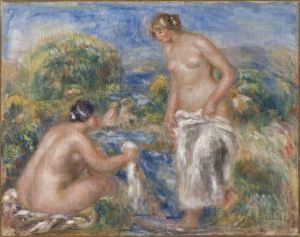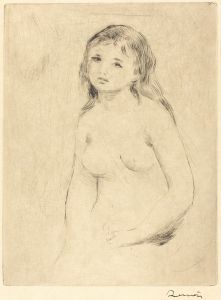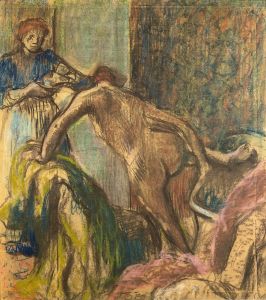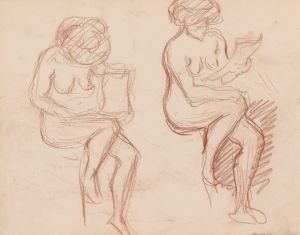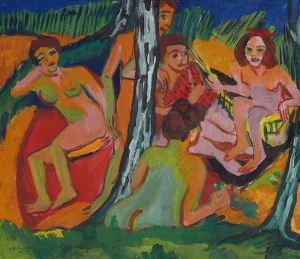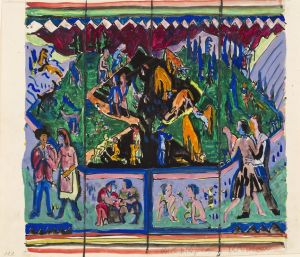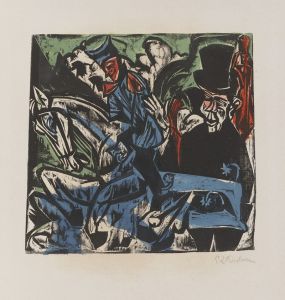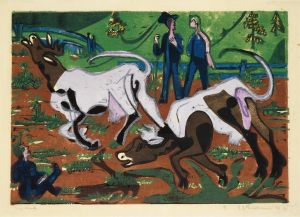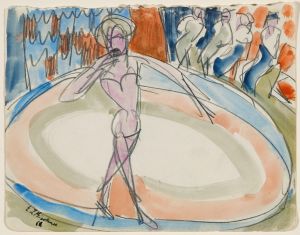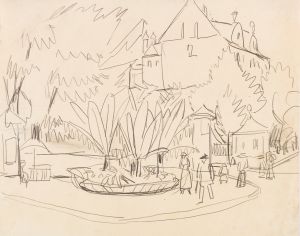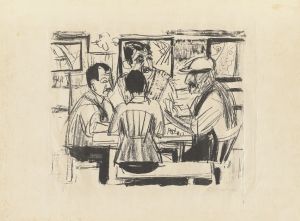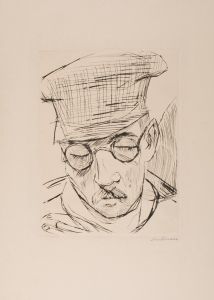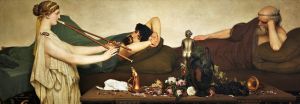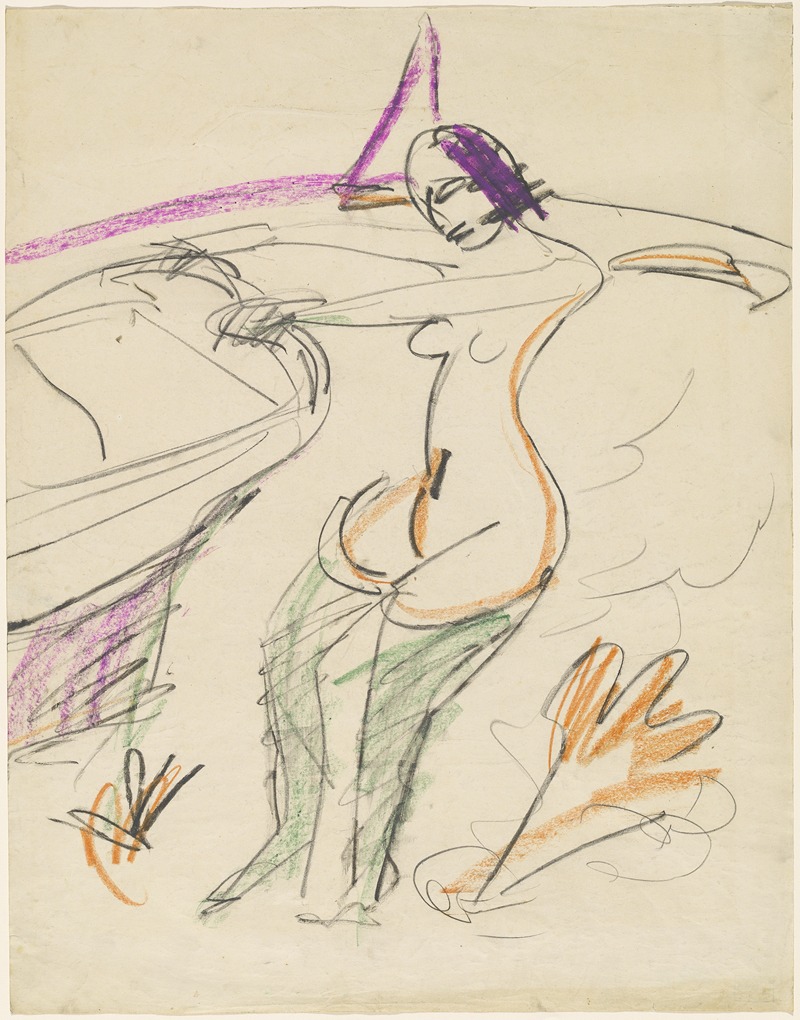
Bather
A hand-painted replica of Ernst Ludwig Kirchner’s masterpiece Bather, meticulously crafted by professional artists to capture the true essence of the original. Each piece is created with museum-quality canvas and rare mineral pigments, carefully painted by experienced artists with delicate brushstrokes and rich, layered colors to perfectly recreate the texture of the original artwork. Unlike machine-printed reproductions, this hand-painted version brings the painting to life, infused with the artist’s emotions and skill in every stroke. Whether for personal collection or home decoration, it instantly elevates the artistic atmosphere of any space.
Ernst Ludwig Kirchner was a prominent German expressionist painter and one of the founding members of the artist group Die Brücke, which played a pivotal role in the development of modern art in the early 20th century. Kirchner's work is characterized by its bold use of color, dynamic compositions, and expressive forms, often reflecting the emotional and psychological states of his subjects. Among his notable works is the painting "Bather," which exemplifies many of the key elements of his artistic style.
"Bather" is one of several works by Kirchner that explores the theme of bathers, a subject that fascinated many artists of the modernist era. This theme allowed Kirchner to experiment with the human form, movement, and the interplay of figures within natural settings. The painting captures the essence of Kirchner's expressionist approach, where the representation of reality is less important than conveying the emotional and psychological experience of the scene.
In "Bather," Kirchner employs a vivid color palette, using bold and often non-naturalistic colors to create a sense of energy and vitality. The brushwork is dynamic and expressive, contributing to the overall sense of movement within the composition. The figures in the painting are rendered with elongated forms and exaggerated features, a stylistic choice that emphasizes their emotional states and the tension within the scene.
Kirchner's interest in the theme of bathers can be traced back to his experiences with Die Brücke, where he and his fellow artists sought to break away from traditional academic art and explore new forms of expression. The group often engaged in outdoor painting sessions, capturing the human figure in natural settings, which became a recurring motif in their work. This approach was influenced by the desire to return to a more primal and direct form of artistic expression, free from the constraints of urban life and industrialization.
The "Bather" paintings also reflect Kirchner's interest in the human body as a site of both beauty and vulnerability. By placing his figures in natural settings, Kirchner creates a dialogue between the human form and the surrounding environment, exploring themes of harmony and tension. This exploration is further enhanced by his use of color and form, which convey the emotional resonance of the scene.
Kirchner's work, including "Bather," had a significant impact on the development of modern art, influencing subsequent generations of artists. His exploration of color, form, and emotion helped to redefine the possibilities of painting in the 20th century, paving the way for future movements such as abstract expressionism.
Throughout his career, Kirchner faced numerous challenges, including the impact of World War I and the rise of the Nazi regime in Germany, which labeled his work as "degenerate art." Despite these obstacles, Kirchner continued to produce art that pushed the boundaries of expression and explored the depths of human experience.
In summary, "Bather" by Ernst Ludwig Kirchner is a quintessential example of his expressionist style, characterized by bold colors, dynamic compositions, and an exploration of the human form in natural settings. The painting reflects Kirchner's broader artistic goals of capturing the emotional and psychological essence of his subjects, contributing to his lasting legacy in the history of modern art.





